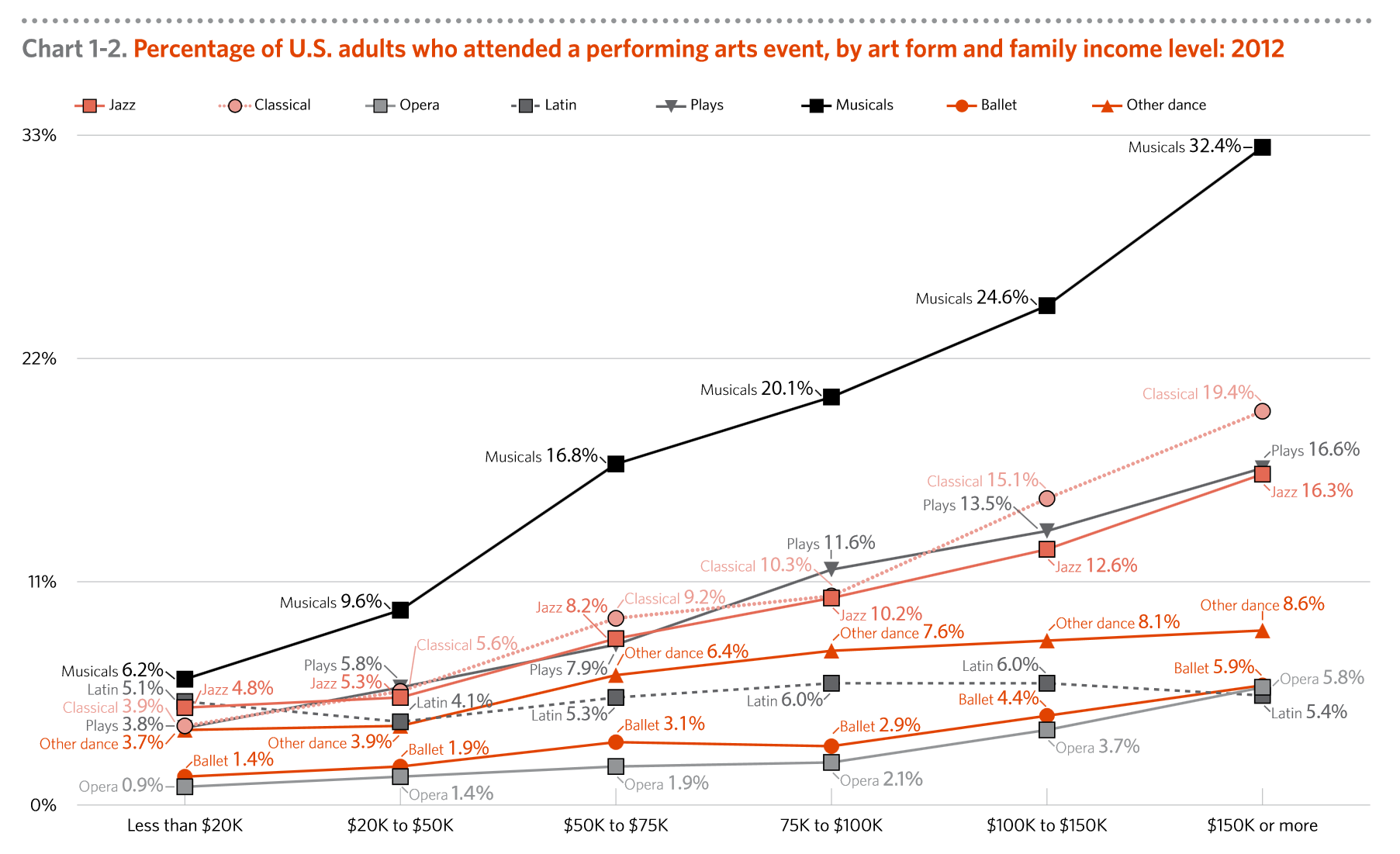The New England Foundation for the Arts has received a grant of $1,700,000 from the Barr Foundation to launch Creative City, a three-year pilot that will make grants to Boston artists to create works that integrate public participation. Creative City will provide new resources to artists to bring their creative voices to Boston neighborhoods, and to further enliven the places where they live, work, and play with culture and creativity.
GIA Blog
Featured in the current Reader, Gwendolyn Zepeda’s Poem for the Grantmakers, written for and read at the 2014 GIA Conference in Houston.
A new report from Createquity takes a deep look at the data on Arts Participation, and also trends in television usage, across segments of the US population at different income and education levels. “Why Don't They Come?” does in fact conclude that television is taking an increasingly dominant role in shaping our cultural lives, especially with the low-income and low-education population.
From the development of a state-wide arts education plan in Alabama to a glassblowing program for wounded soldiers in Tacoma, Washington, funding from the National Endowment for the Arts (NEA) gives people across America the opportunity to experience creativity and participate in the arts. In the second major grant announcement of fiscal year 2015, the NEA will make 1,023 awards totaling $74,326,900 to nonprofit arts organizations in all 50 states plus five U.S. jurisdictions. Funding in this round is awarded through the NEA’s Art Works and State and Regional Partnerships grant categories.
From Robin Pogrebin at The New York Times:
During the month of May, GIA’s photo banner features work and projects sponsored by the Whitaker Foundation. The St. Louis, Missouri based foundation began in 1975 upon the death of Mrs. Mae Whitaker. The Foundation is independent with governance provided by a self-perpetuating board. Grants are made to enhance lives through the arts and to preserve and encourage use of urban parks.
From Andrew Theen at The Oregonian:
Featured in the current Reader, Anne Focke documents two important meetings in the 1980s that brought hundreds of people together to discuss Creative Support for Creative Artists.

The National Assembly of State Arts Agencies board of directors has announced the appointment of Pam Breaux as NASAA’s chief executive officer, effective July 6, 2015. The national search effort was conducted with the assistance of Arts Consulting Group. A native of Lafayette, Louisiana, Breaux has held leadership positions at the local, state and national levels. She currently is completing her appointment as assistant secretary of the Office of Cultural Development at the Louisiana Department of Culture, Recreation and Tourism (CRT). She is a former secretary of CRT and was executive director of the Louisiana Division of the Arts. During her time at CRT, Breaux led the state’s cultural economy policy efforts, developed the annual World Cultural Economic Forum program and spearheaded the state's attainment of UNESCO recognition of Poverty Point as a World Heritage site.
The Art X Culture X Social Justice Network is based on the power of art and culture to advance social justice by inspiring collective action across identities, issues, sectors, geographies, and power imbalances. It works to bring together artists, activists, cultural bearers, and philanthropists. Check out their new web presence at artculturejustice.com.


